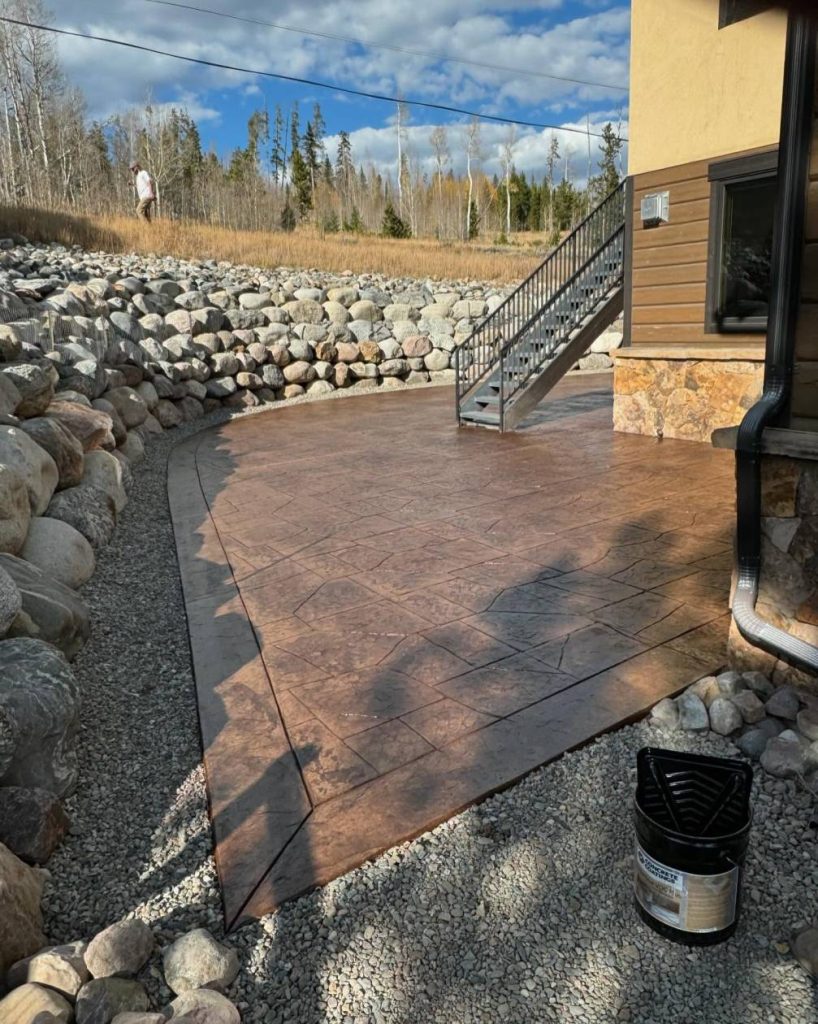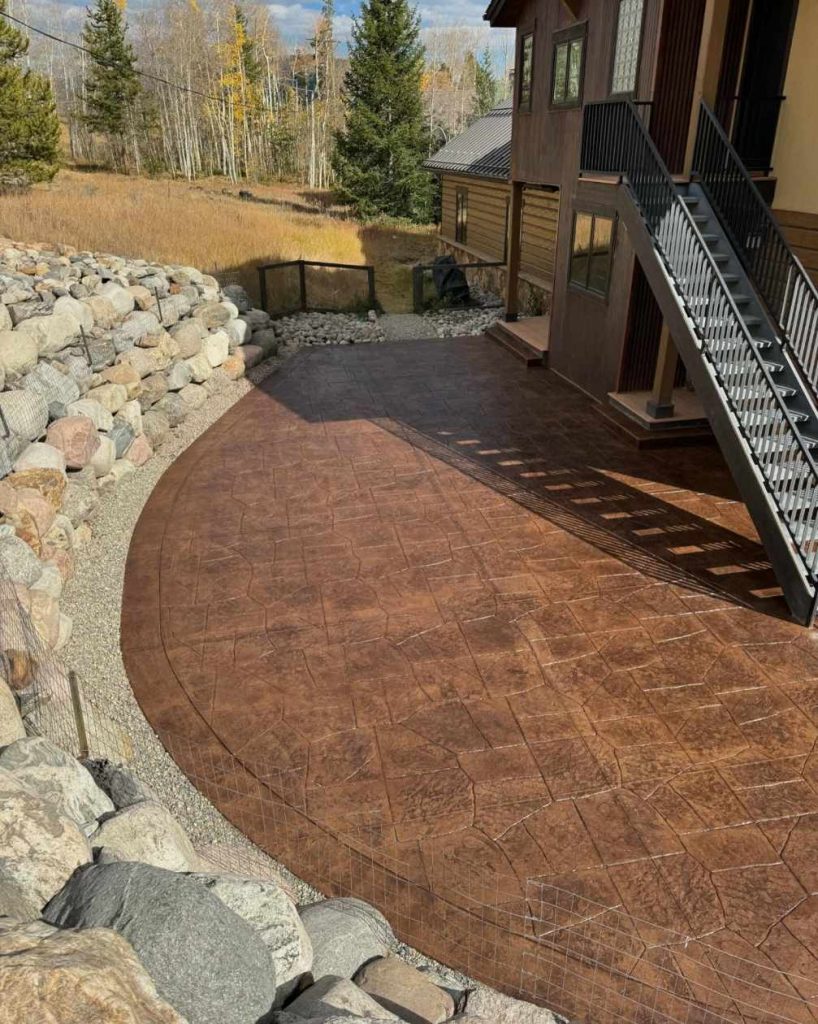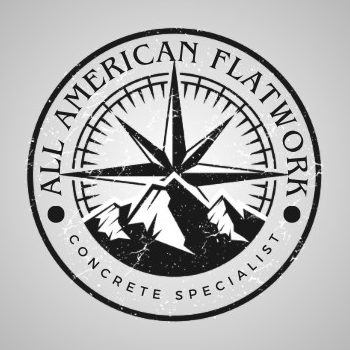Sealing your concrete patio might sound tricky, however, it’s actually super simple process. Do it right and it can save you money in the long run. Not only does sealing protect it from the elements but it can also help boost your outdoor spaces’ curb appeal. If you need to know how to seal a concrete patio for a DIY project or are considering hiring a contractor, we compare pros and cons.
This step-by-step guide shows you exactly how much it can cost to seal a concrete patio. You’ll learn what tools you’ll need and when to seal. Let’s identify the best concrete sealer together.
Why Do You Need to Seal a Concrete Patio?
Sealing a concrete patio helps protect it from damage caused by moisture, sun exposure, freeze-thaw cycles, and everyday wear. Without a sealer, water can seep in, causing cracks, stains, or erosion over time. A good sealant also enhances the color and finish, especially on stamped or decorative concrete. It makes cleaning easier and extends the life of your patio, so you spend less time on maintenance and more time enjoying it. Think of it as a protective barrier for your concrete—it’s not flashy, but it does the heavy lifting.
What Are the Pros and Cons of Sealing a Concrete Patio?
Pros of Sealing a Concrete Patio
- Protection from Weather – Sealer helps block water, snow, and ice from soaking into the surface, preventing cracks, stains, and long-term damage.
- Enhanced Appearance – It protects from color fading, especially on stamped or stained concrete, giving your patio a clean, finished look.
- Longer Lifespan – A sealed patio resists wear and tear better, meaning fewer repairs and replacements down the road.
- Easier Cleaning – Dirt, oil, and spills wipe off more easily, and sealed surfaces are less likely to develop mildew or mold.
- Slip-Resistance Options – Some sealers can include additives to improve grip, making your patio safer when wet.
Cons of Sealing a Concrete Patio
- Needs Reapplication – Sealers don’t last forever. Most need to be reapplied every 2–5 years depending on traffic and weather exposure.
- Can Be Slippery – Some glossy sealers make the surface slick when wet, especially if no anti-slip additives are used.
- Upfront Cost – While not extreme, there’s a cost for professional sealing or high-quality DIY products, especially for larger patios.
- Surface Prep Matters – If the concrete isn’t clean or dry when sealed, it can trap moisture or debris, leading to peeling or white patches.
- Appearance Changes – Sealers can darken the surface or give it a shiny finish, which not everyone likes. Choosing the wrong product can affect the final look.
What Type of Concrete Sealer is Best for Patios?
The best sealer depends on how you use your patio and the look you’re going for. Penetrating sealers are great for durability as they soak in and protect from water, freeze-thaw, and salt without changing its’ look. Acrylic sealers enhance color and give a light sheen, making stamped or decorative concrete pop. If you want a glossy, wet look, solvent-based acrylics are popular, but they may need more maintenance. Just be sure the product is breathable and UV-resistant to hold up in Colorado weather.
Water-Based Sealer
Water-based sealers are simple to use and dry fast. Also, it has very little smell. Therefore, it is great for DIY projects. The solvent is safe for the environment and doesn’t change the color much. Water based sealers are best for patios with little foot traffic and no harsh weather.
Solvent-Based Sealer
Solvent-based sealers will make your patio look shinier. They are stronger and last longer in direct sunlight. You can apply to areas with high foot traffic. In other words, the sealer is ideal for decorative patios. However, they may smell strong and can be very slippery when wet.
Penetrating Sealer
Penetrating sealers go deep into the concrete. As a result, they protect it from water. The sealant does not have a shiny finish. It will not change how the surface looks. They’re best if you want a natural-looking patio with protection. Concrete patio sealing will work well on freezing and rainy days.
Acrylic vs Epoxy vs Polyurethane
Acrylic sealers give a bit of a shiny look. They are perfect if you want a nice, smooth and glossly finish. Secondly, epoxy has a thicker and glossy layer that feels more like plastic. Lastly, polyurethane sealers have the smoothest. The glossy finish looks like glass. Therefore, choose the finish that matches your style and needs.
Acrylic is the most budget-friendly. It usually costs $20–$30 per gallon. However, epoxy is pricier at $50–$100 per gallon. Polyurethane costs the most, from $70 to $120 per gallon. Acrylic will save you money now. But epoxy and poly are better for future use.
Use acrylic when you want fast drying with a simple look. Next, epoxy is best for high-traffic areas where you need strength. Polyurethane is perfect for patios that are always in the sun or rain. It lasts longer than the other two options.
Epoxy sealers are super strong. They will form a hard shell over your patio. After sealing stamped concrete patio, you will not notice stains. That’s why people love them for garages. If your patio is for parties or pets running around, epoxy will ensure longer use.
Next, acrylic sealers boost your patio with a cleaner look. They dry quickly. Also, you can purchase the sealer in clear and colored versions. Use them if your main goal is appearance. They are a great concrete patio sealer for showing off decoration. You do not need to spend too much either.
Lastly, polyurethane sealers give great protection. They block out water and UV rays. Chemicals will not damage the floor. Your patio will stay safe from the sun or messy spills. Poly keeps it looking fresh for years. It’s tougher than acrylic and more resistant than epoxy. Choose poly for the best results.
How to Clean and Prep Your Concrete Patio for Sealing
Clean the Surface Thoroughly
Before sealing your patio, prep is everything. A clean surface helps the sealer bond better and last longer. Use a power washer to blast away dirt, grime, mildew, and any stains. Make sure you don’t leave behind soap or debris as it can prevent the sealer from sticking properly.
Let It Dry Completely
Concrete holds moisture deep inside. If it’s still damp when you apply sealer, it can bubble or flake. Therefore, give it 24 to 48 hours to dry completely. Meanwhile, do not start anything else.
Next, buy a concrete cleaner or degreaser from Home Depot or your nearest home improvement store. Follow the label instructions. Use a stiff brush to scrub every dirty area very well.
Check for Cracks or Damage
Finally, asses any defects cleaning might reveal. Chips, cracks, scratches and soaked in stains will be easier to spot. You can fix most tiny defects with a concrete filler or reapplying more concrete.
For repairing concrete cracks, you typically grind down or open up the edges of the crack, creating a wider area for the repair material to adhere to. Smaller cracks (less than 1/4 inch) often need to be widened, while wider cracks may need to be ground smooth for a uniform surface.
After grinding, clean the area thoroughly and apply a suitable repair material like epoxy or polymer-modified cement.
How to Apply Concrete Sealer Step-by-Step
1. Choose the Right Day
How to seal a concrete patio? The answer begins by choosing the perfect day. You need to pick a warm day. The temperature should stay between 50°F and 85°F with no rain for at least 24 hours.
2. Apply with a Roller or Sprayer
The sealer for stamped concrete patio needs to be applied with a low-pressure sprayer or a ⅜” nap roller. Otherwise, you might waste the product. Next, apply two light coats instead of one to avoid peeling.
3. Let It Cure
Let the sealer cure properly. You must wait for 24 hours before walking. Do not place furniture for the next 3 days. Also, do not seal in direct sunlight. Otherwise, the results are patchy. That is how to seal a concrete patio!
How Much Does It Cost to Seal a Concrete Patio?
DIY Costs
The sealer will cost you around $30–$150, depending on type and brand. Spend an additional $20–$50 on rollers, trays, or sprayers. Overall, the cost is $50–$200 for small patios.
Hiring a Concrete Sealing Contractor
Most professionals in your area will charge $1.25–$2.50 per square foot. Thus, the average patio sealing cost is between $500–$1,000+. The sealer for stamped concrete patio includes labor, cleanup, and crack repair. High-quality products are expensive.
Should You Seal the Patio Yourself or Hire a Pro?

You can seal a patio yourself with the right tools, but it’s easier to mess up than most people think. Uneven coats, trapped moisture, or using the wrong sealer can lead to cloudy finishes or peeling. Hiring a pro ensures the surface is cleaned, prepped, and sealed properly—especially if your concrete is decorative or stamped. Plus, professionals use high-grade products that last longer than what’s sold at big box stores.
DIY is best when
You can seal concrete patio if the area is small and already in good condition. It is a busy weekend project when you have time to spare.
Hire a pro when
You will need professional help if the patio is stamped or decorative. Do not try to fix damages or peeling from old sealers. Experts will give longer-lasting results without guesswork.
How Often Should You Seal a Concrete Patio?
Most concrete patios should be sealed every 2 to 3 years, depending on foot traffic, sun exposure, and weather conditions. If the surface looks dull, starts absorbing water, or shows signs of wear—it’s time. Harsh Colorado winters can wear sealers down faster, so regular inspection helps catch issues early. Keeping up with sealing helps your patio last longer and keeps it looking fresh.
Need Help Sealing Your Concrete Patio in Colorado?

Does sealing your concrete look difficult? Do you want it done right? Then, call All American Flatwork. We are the top option when you search for concrete patio sealing near me. We will handle every step so you don’t stress out.
All American Flatwork specializes in concrete patio installation across Denver, Aurora, Castle Rock, and nearby areas. Our experienced crew delivers smooth results. We will protect your surface and boost your home in the best way.
